Tranquil™ flexes
like spinal cancellous bone.
Stable-C™ standalone cervical.
Simple deployment
Integrated anchors
Standalone cervical cage
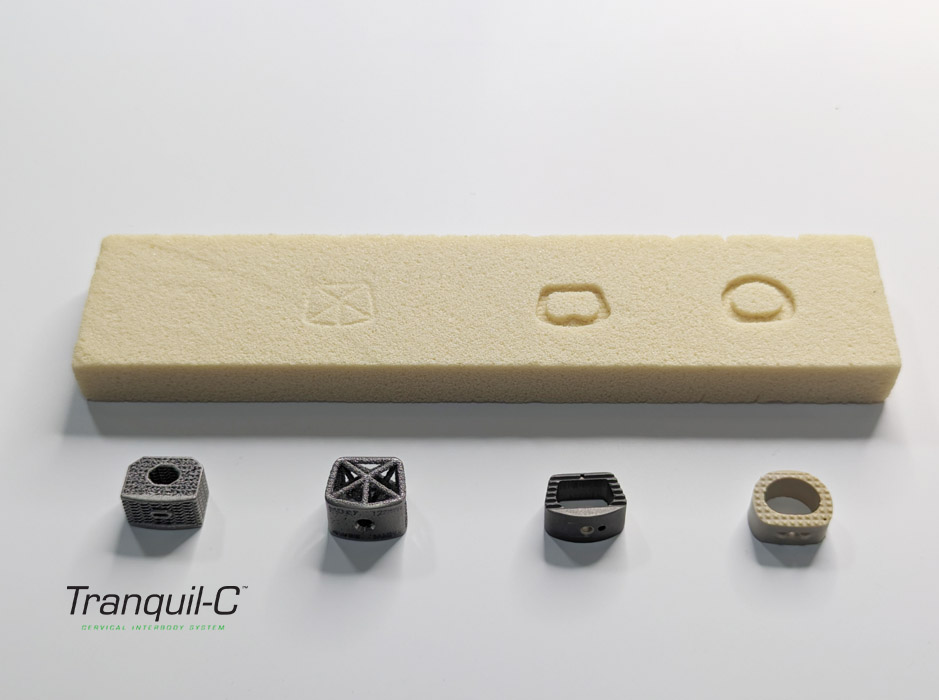
High contact stress causes bone fracture, and fracture is painful.
Fracture of the vertebral endplate results in loss of segmental height (subsidence). Bone fracture is painful. Other interbody cages cause high contact stress.
Stress shielding causes bone cells to resorb (bone loss).
Other cages are too stiff. They prevent healthy strain in and around the cage. Stable bone cannot form inside of a rigid cage. Bone that is shielded will resorb.
In this video we load a stack of interbody cages. Only the quail egg inside of the Tranquil cage experienced strain. Bone will form in and around the Tranquil cage. The other cages are too rigid to allow strain of the quail eggs.
Tranquil pores draw vertebral blood into the cage through capillary action.
Within moments after implantation the Tranquil cage will absorb the patient’s vertebral blood. The Tranquil cage then flexes under physiologic loading. Flexing under physiologic loading is essential to trigger the patient’s stem cells to become bone cells.
Other cages are TOO stiff to provide the strain needed for bone to grow IN THEM, ON THEM, or BESIDE THEM.
This is from a patient who received two competitive interbody cages and one Tranquil interbody cage. The x-ray from two weeks has been superimposed with the x-ray from six weeks. A .gif created by alternating between the two x-rays shows that the competitive cages have not provided flexion/extension stability, nor endplate resorption, nor bone formation. Tranquil is stable, endplates have resorbed and new bone is forming.
Here is a friendly reminder that Tranquil flexes under physiologic loads.
Other cages don’t match the stiffness of spinal cancellous bone.
What are others doing to MASK the fact that new, stable bone is not forming in their cage?
They fill their interbody cage with supplemental biologics:
- Biologics create a mirage, a radiograph that masks the absence of new bone by filling the cage with material that has the radio-opacity of cortical bone.
- The radio-opacity of the biologic is misleading. A blob of granules does not provide stability.
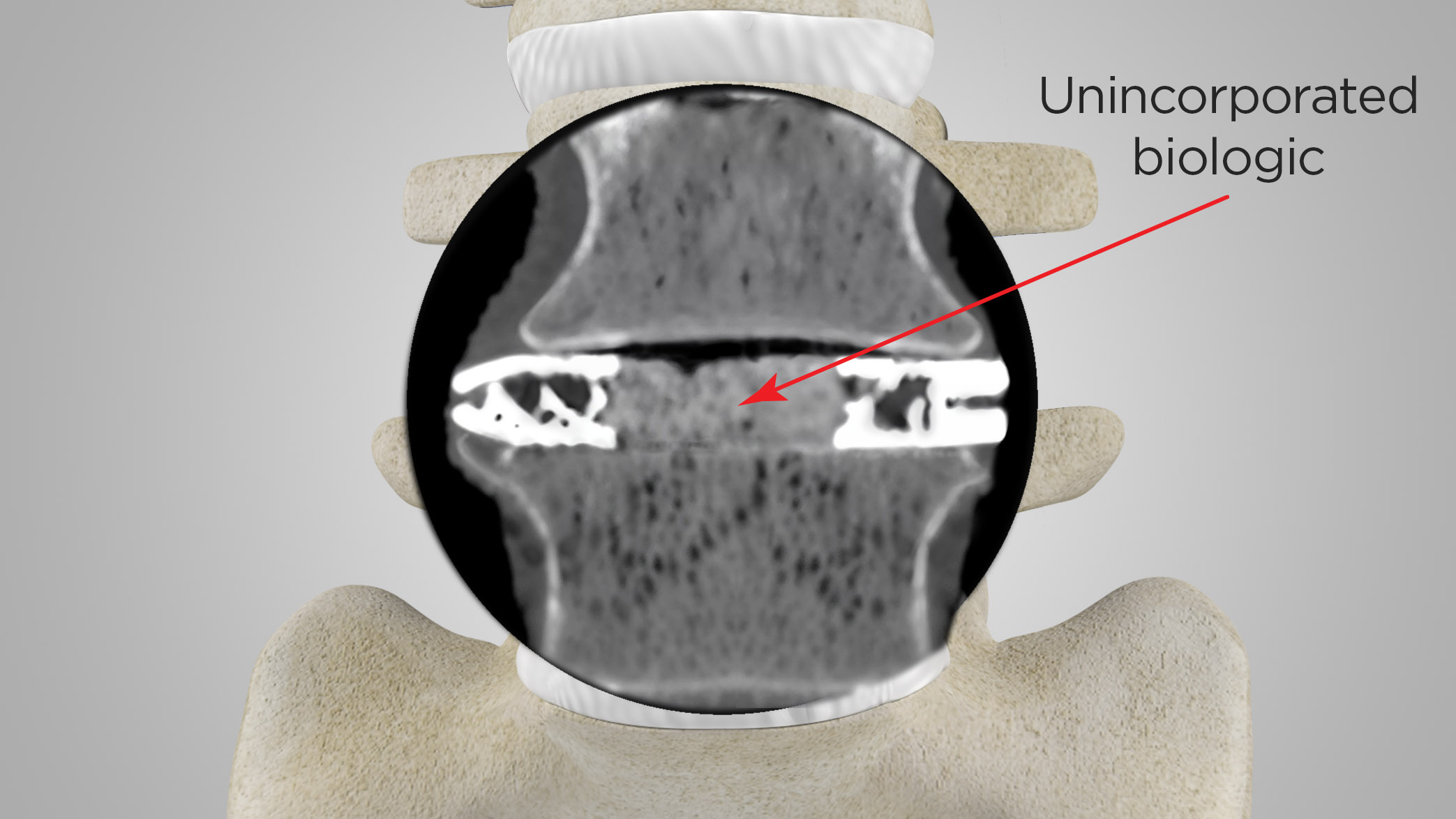
CT scan of “their” cage. Cage is still full of granulated biologics.
PINK is blood. Not bone.
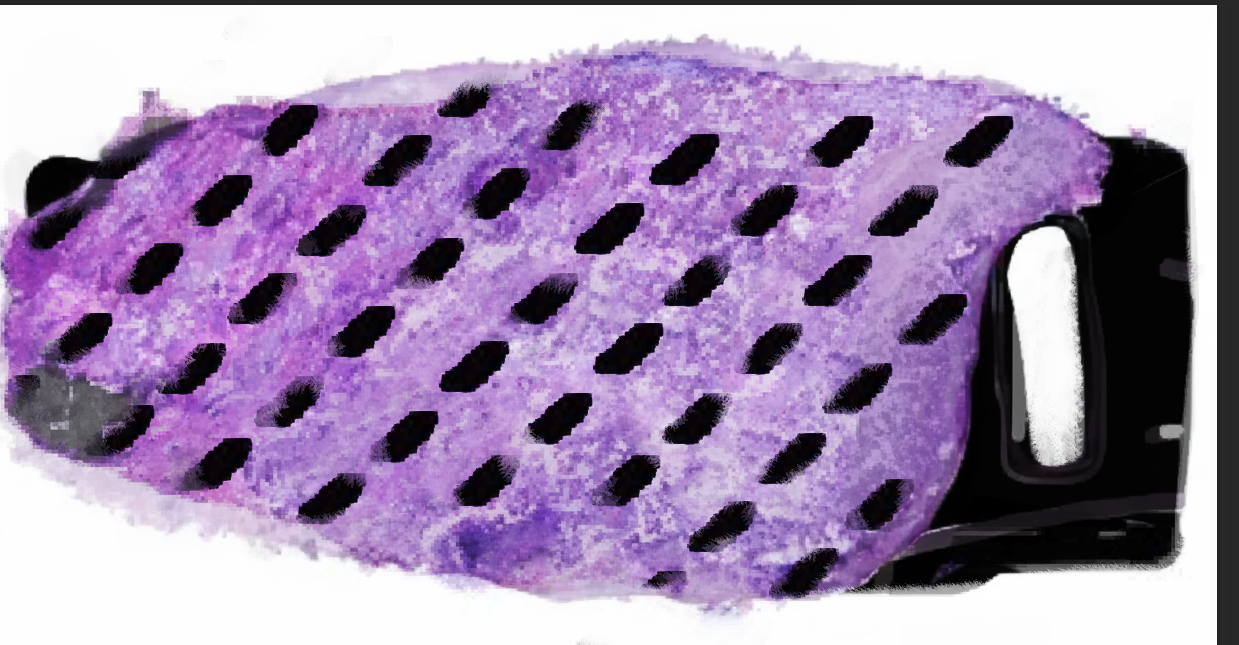
Histological slice (H&E staining) of their cage explanted two years postoperative. Pink demonstrates bone marrow, blue indicates trabecular bone. Bone marrow does not provide mechanical stability.
This competitive cage is full of blood, not bone.
Take a moment to recognize that all that pink DOES NOT provide stability. It is squishy. After two years there are a few, sparse blue dots that are bone. The pink is not bone. Ironically, this histological slice image and others like it show that their rigid devices are not forming stable bone.
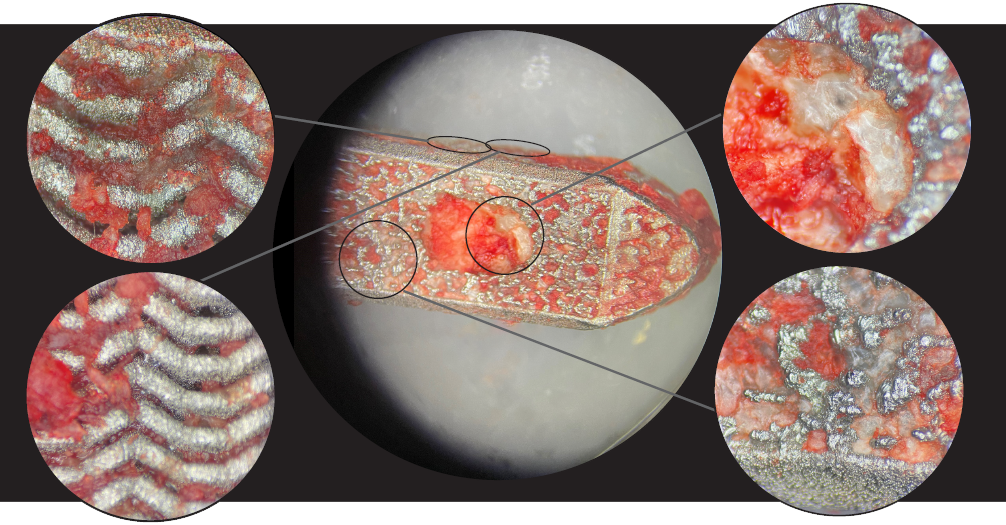
Tranquil™ explant at 6 weeks. Full of hard bone.
Our cage is full of strong bone.
Take a moment to recognize that this explant from 6 weeks post-op is full of hard bone. The bone can be palpated, and directly viewed. It is strong, stable bone. No radiograph mirage. No pink histological slice. No tricks. Just bone.
How do we know the other cages are too stiff?
- They say so in their marketing brochures
- We have tested them
- We hold the patent on the appropriate stiffness range
- Compliant mechanisms – Call us to Learn more
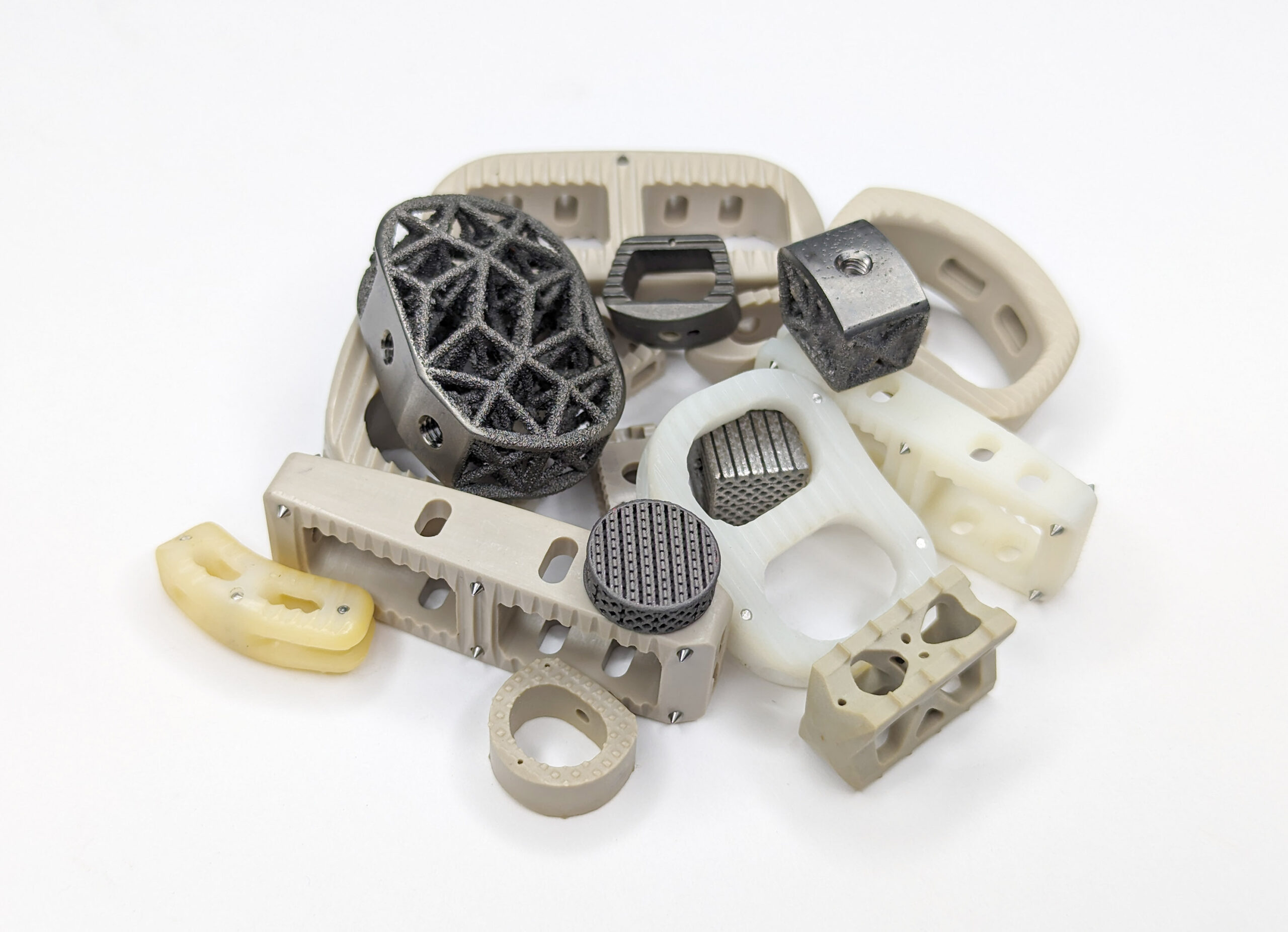
Industry Buzz Words – glittering generalities, not substantive science
MODULUS OF ELASTICITY – A material property that cannot be changed. Titanium has a modulus of elasticity of ~ 113GPa. Strange that companies suggest they can change the modulus of elasticity of titanium to “almost match PEEK”. That’s not possible, and it wouldn’t matter if it were.
WOLFF’S LAW – “bones will adapt to the degree of mechanical loading”. While that is true, it is not a complete description of what is needed for stable, strong bone.
Strain within safe limits is the key.
POROSITY – Pores that are too small prevent vascularization. Pores that are too large prevent bone bridging. They’ve sized their pores for radiolucency instead of stability.
SPOT WELD– The reality is bone cannot stay attached to a cage that is too stiff. A cement line will form and lead to aseptic loosening.